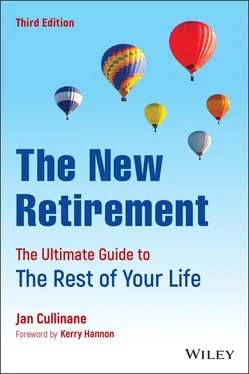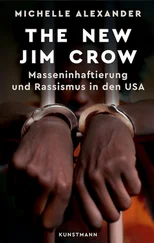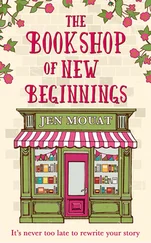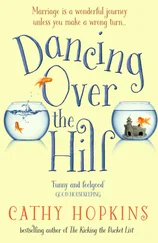Jan Cullinane - The New Retirement
Здесь есть возможность читать онлайн «Jan Cullinane - The New Retirement» — ознакомительный отрывок электронной книги совершенно бесплатно, а после прочтения отрывка купить полную версию. В некоторых случаях можно слушать аудио, скачать через торрент в формате fb2 и присутствует краткое содержание. Жанр: unrecognised, на английском языке. Описание произведения, (предисловие) а так же отзывы посетителей доступны на портале библиотеки ЛибКат.
- Название:The New Retirement
- Автор:
- Жанр:
- Год:неизвестен
- ISBN:нет данных
- Рейтинг книги:5 / 5. Голосов: 1
-
Избранное:Добавить в избранное
- Отзывы:
-
Ваша оценка:
- 100
- 1
- 2
- 3
- 4
- 5
The New Retirement: краткое содержание, описание и аннотация
Предлагаем к чтению аннотацию, описание, краткое содержание или предисловие (зависит от того, что написал сам автор книги «The New Retirement»). Если вы не нашли необходимую информацию о книге — напишите в комментариях, мы постараемся отыскать её.
The New Retirement: The Ultimate Guide to the Rest of Your Life
The New Retirement, 3rd edition,
The New Retirement — читать онлайн ознакомительный отрывок
Ниже представлен текст книги, разбитый по страницам. Система сохранения места последней прочитанной страницы, позволяет с удобством читать онлайн бесплатно книгу «The New Retirement», без необходимости каждый раз заново искать на чём Вы остановились. Поставьте закладку, и сможете в любой момент перейти на страницу, на которой закончили чтение.
Интервал:
Закладка:
11 This book will be invaluable to those who are looking to make the rest of their life the best of their life.
Like the old L'Oréal commercial, you should read this book “because you're worth it.” Ready to get started? Let's go!
CHAPTER 1 What Makes Retirement Successful?
Did you take the SAT or ACT? If so, did you try a few practice tests or take a prep course to familiarize yourself with these assessments prior to the actual test? If you had children, did you help prepare them for kindergarten by teaching them numbers and shapes and colors and letters? If you had a job interview, did you research the company, prepare questions to ask the interviewer(s), dress appropriately, and show up on time? For most of us, the answers would be yes. Preparation is an important ingredient for achieving our goals.
Yet, you have probably heard that many people spend more time planning a two-week vacation than they do planning for retirement. It's understandable – you're caught up in day-to-day living, you have a lot on your plate, you have competing demands for your time, and retirement may seem far away. Thinking about retirement can cause “analysis paralysis.” So many choices – whether to stay or relocate, how to structure your time, aging parents and/or boomerang kids, whether to continue working in some fashion, and so forth. And, of course, if you're part of a couple, aligning retirement goals may be a challenge (such as the couple at a talk I was giving told me they had never discussed it, but the wife assumed they were moving to the East Coast when they retired and husband assumed they would relocate to the West Coast!).
To demonstrate how significant retirement is, consider the Holmes and Rahe Stress Scale. Two psychiatrists, Thomas Holmes and Richard Rahe, developed a list of 43 common life events of varying severity, and ranked them based on more than 7,500 participants' responses. For example, the top stressful event on the scale is the loss of a spouse or child. The forty-third event on the list is a minor violation of the law (such as a parking ticket). Retirement ranked number 10, right above “a major change in the health or behavior of a family member.” Pretty telling.
When you consider how much time you may have after leaving a primary career, recognize that women in the United States have an average lifespan of 81 years and retire on average at age 63 (according to the Census Bureau), so retirement averages about 18 years for women, and a little less for men, with their few years' shorter lifespans. So, let's see: 18 (years) × 365 (days/year) = 6,570 days of retirement; some people will spend 20 or 30 or more years in retirement. It's obvious that it's vital for peace of mind to spend time planning, both from a financial and nonfinancial standpoint.
Think of this book as a prep class for retirement. A prep class that will help you become confident as you approach this transition, and formulate what specific actions to take (with your significant other, if there is one) to make these years the best years. And, this class is “taught” by an award-winning expert (with contributions from other experts) with more than 40 years of experience in both the financial and nonfinancial areas of retirement.
A Brief Retirement History
Before going forward, let's go back. The concept of retirement is fairly recent. At the beginning of the nineteenth century, few people retired, because they simply could not afford to do so. In the United States, the average lifespan for white men was 47; for men of color, it was 43. For white women, the average lifespan was 49 years and only 34 years for women of color. No time/not enough money = no retirement for the vast majority of people in the 1800s.
As white-collar jobs replaced a predominantly agricultural economy, however, incomes rose, and people had more money, along with longer lifespans. Improved sanitation, housing, education, the development of vaccines and antibiotics, and the subsequent decline in death rates among all ages increased average life expectancy. FDR signed the Social Security Act into law on August 14, 1935. Besides replacing some of the income that was lost due to retirement and creating somewhat of a safety net, Social Security was also an incentive to create job opportunities for younger workers. In January 1940, Ida May Fuller of Ludlow, Vermont, became the first recipient of Social Security benefits. And did she benefit! Ida lived 35 more years, and collected almost $23,000 in benefits before passing away at the age of 100. That's the equivalent of about $430,000 today.
Our current labor force, compared to Ida May's time, is larger, more diverse, older, and more female. In 2020, women held the majority of jobs for the first time (if you exclude farm workers and the self-employed), according to the Bureau of Labor Statistics. Declining births, coupled with longer lifespans, reduces the number of workers supporting each retiree. In 1975, there were about 3.2–3.4 workers per retiree. In 2013, there were about 2.8; in 2034, it's estimated that only 2–2.3 workers will be supporting each retiree, according to the Social Security Administration. There is a deeper exploration of Social Security in Chapters 7and 8.
Many reading this book are in the Boomer cohort, defined as those born between 1946 and 1964. This group, about 75 million strong, has been described by demographers as a “pig in a python” due to the huge number of births fueled by the end of World War II coupled with a booming economy. And now Boomers are retiring or semiretiring. As mentioned in the book intro, 10,000 people will reach the age of 65 every day until 2030, when all Boomers will be at least 65. But you may be part of the 12 million households who “aspire to retire” by age 55.
The “New” Retirement
Is the word retirement outdated? Most say yes, because the word conjures up images of withdrawing, being sedentary, old (in attitude if not age), and non-contributing members of society. Terms like Zoomers, Arrivement, Life 2.0, Next Act, Encore, Third Act, and so forth have been suggested as alternatives (my favorite is the Spanish word to describe retirement, jubilación). But, for the sake of name recognition, I'll continue to use the word retirement .
For some, a long and (hopefully) rewarding job/career followed by nonworking years is the retirement goal. For others, retirement is more of a process, perhaps involving several forays into and out of alternative projects, pastimes, and careers/jobs. Many people hope to do a “phased transition” to retirement and combine more leisure time with work, and some insist they will never retire. Some want to retire by age 55. Others want to be part of the FIRE movement – financial independence, retire early – in which the goal is to live on your own terms by the time you're in your 30s or 40s. With FIRE, you can work full-time, work part-time, or not work – it's your choice. Needless to say, unless you hit it rich when you're young or get a big inheritance, FIRE involves very aggressive saving and investing, and perhaps living a radically different kind of lifestyle. So there are lots of choices. But whichever flavor of retirement you think you might want to pursue, this book will help guide you.
Expectations versus Reality
“Work 'til you drop” – that is the professed retirement plan for a number of people, whether it's because they love what they do, they need the money, it's something with which they are familiar, it's easier to avoid change, or some combination of these. But retirement can happen whether you're ready or not. Some professions have mandatory retirement ages, including airline pilots, firefighters, FBI agents, and certain judgeships. In other cases, people are unexpectedly downsized, “right-sized,” need to retire to care for an aging parent, they or their spouse or child have an illness, the business changes, or a calamity (such as Covid-19) hits.
Читать дальшеИнтервал:
Закладка:
Похожие книги на «The New Retirement»
Представляем Вашему вниманию похожие книги на «The New Retirement» списком для выбора. Мы отобрали схожую по названию и смыслу литературу в надежде предоставить читателям больше вариантов отыскать новые, интересные, ещё непрочитанные произведения.
Обсуждение, отзывы о книге «The New Retirement» и просто собственные мнения читателей. Оставьте ваши комментарии, напишите, что Вы думаете о произведении, его смысле или главных героях. Укажите что конкретно понравилось, а что нет, и почему Вы так считаете.












